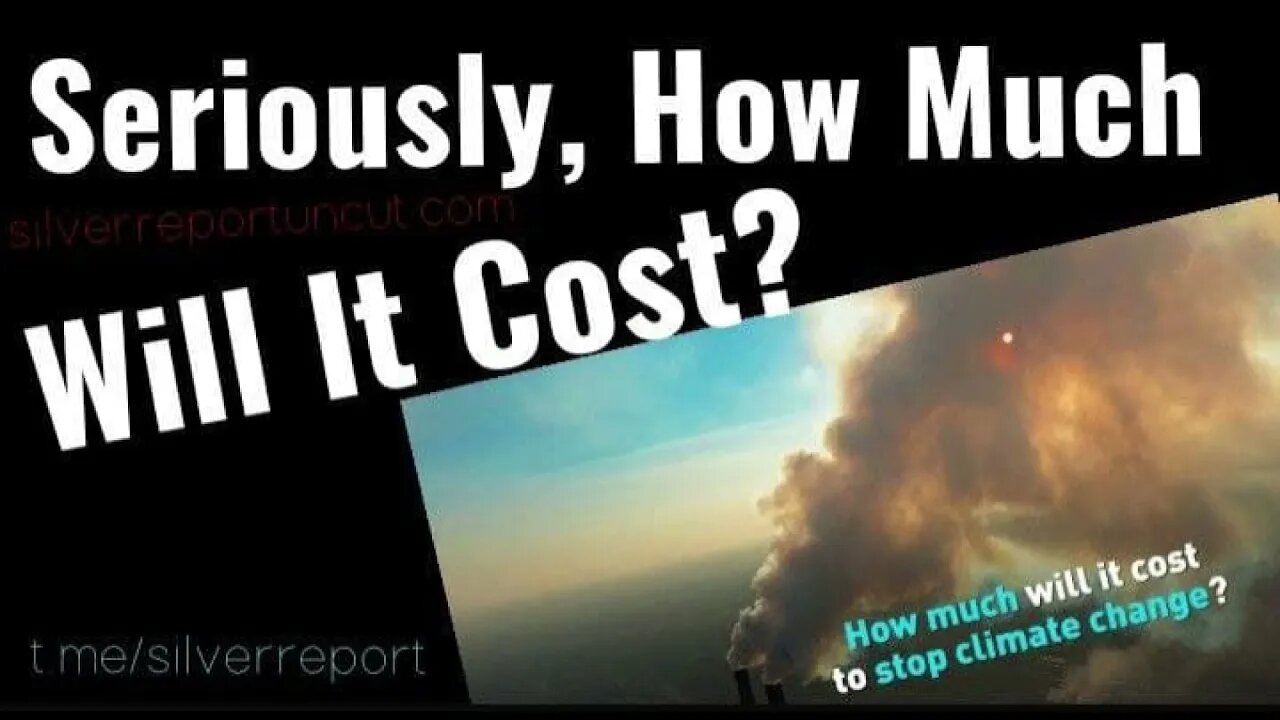Premium Only Content

Janet Yellen Put's The Cost Of Green Will Be 150 Trillion Dollars, BOA Explains The Crushing Price
Subscribe to http://youtube.com/c/growathome
follow our backup channel
http://bit.ly/odyseesru
http://silverreportuncut.com
Subscribe to the SRU podcast
http://soundcloud.com/silverreport
http://silverreportuncut.podbean.com
Follow Us On Telegram http://t.me/silverreport & https://parler.com/profile/silverreport/posts
anyone can post on our public group http://t.me/silverreportforum
Ad revenue is down almost 70%, it's viewers like you who help keep the sru coming! you can donate via crypto at our website or consider supporting our work on
http://buymeacoffee.com/silverreport
https://www.patreon.com/silverreport
Bank of America published a breakdown of the true price tag of converting the nations power... 150 trillion dollars.
"while it is handy to have a centralized compendium of the data, a 5 minute google search can provide all the answers that are "accepted" dogma by the green lobby. But while we don't care about the charts, that cheat sheets, or the pr0pag@nda, what we were interested in was the bottom line - how much would this green utopia cost.
Turns out it does. A lot, lot.
When Janet Yellen was responding rhetorically to the key question, "how much will it cost?", BofA cuts to the chase and writes $150 trillion over 30 years - some $5 trillion in annual investments - amounting to twice current global GDP!
This was BofA's startling admission of the above, as excerpted from the report's Q&A on the Conference (COP 26):
Q: What is the economic impact of getting close to zero?
A: The inflation impact of elevated net zero funding will not be insignificant but the impact looks manageable at 1% to 3% per annum depending on central bank monetization rates, particularly if government spending is targeted and contributes to accelerate the rate of global GDP growth. The IEA also has a productive outlook for their net zero scenario, where the change in the annual growth rate of GDP accelerates by somewhere between 0.3% and 0.5% on a sustained basis over the next 10 years as a result of a shift to a green economy.
So, much more QE for the next 30 years, check. What about inflation? Oh, there will be plenty of that too. As BofA admits, "green bond purchases could result in a 1% to 3% inflation p.a. shock"
BofA looked at three separate cases. In the first case, the Fed, ECB and other central banks would subsidize all of the required infrastructure spending to decarbonize (translation: print the money). In a second scenario, they would absorb only half of the new bond issuance. And in a third case, central banks take up only a fifth of all decarbonization spending onto their balance sheet. What is the key finding? If central banks only have to foot 20% of the bill or less, the impact of decarbonization looks "fairly manageable" with respect to inflation (Exhibit 108).
And just so readers know what to BofA looks "manageable" here it is: this is inflation on top of whatever inflation is already in the economy. Of course, if central banks have to "foot" 50%, 80%, or more
-
 14:19
14:19
SRU
2 years ago $0.02 earnedThe Dollar Is Once Again The World's Problem - Chinese State Urges De-Dollarization - A Rising Trend
244 -
 1:16:30
1:16:30
RiftTV
4 hours agoHow Blue Light is Turning You Gay | The Rift | Guest: Jack Kruse
19.1K5 -
 LIVE
LIVE
Eternal_Spartan
11 hours ago🟢 Eternal Spartan Plays Final Fantasy 7 Remake Intergrade | USMC Vet | Join the Best Chat on Rumble
79 watching -
 LIVE
LIVE
MissesMaam
1 hour ago*Spicy Sips* Friend Friday with Mally_Mouse and Friends!!! 💚✨ (part 2 stweam crashed)
61 watching -
 LIVE
LIVE
Tundra Tactical
3 hours ago $0.02 earnedCrits & Giggles Diablo IV On A Friday Night!
39 watching -
 LIVE
LIVE
JdaDelete
20 hours ago $0.01 earnedMetal Gear Solid Δ: Snake Eater | Part 1 - Pretty Good?
21 watching -
 5:14:52
5:14:52
Biscotti-B23
5 hours ago🔴 LIVE $5000 SINGLE ELIM TOURNAMENT 🏆 DEMON SLAYER HINOKAMI CHRONICLES 2
2.13K -
 LIVE
LIVE
SavageJayGatsby
21 hours agoFriend Friday | MicroWorks | $300 Weekly Goal for Spicy Bite Saturday | 250 Follower Goal!
31 watching -
 1:09:09
1:09:09
Edge of Wonder
5 hours agoCattle Mutilations, Chupacabra Sightings & NASA’s Voyager Goes Dark?
13K4 -
 LIVE
LIVE
Mally_Mouse
1 day agoFriend Friday!! 🎉 - Let's Play! - Microworks
67 watching